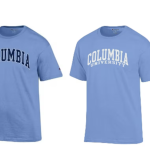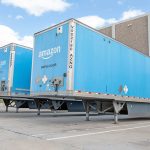Adobe Digital Insights (Adobe, ADI) reported that it expects U.S. online sales to hit $240.8 billion this Holiday shopping season (November 1 to December 31), representing an 8.4 percent growth year-over-year (y/y).
The company announced that shoppers spent $221.8 billion online in the 2023 Holiday period, representing 4.9 percent growth year-over-year. Shopping on mobile devices is expected to hit a new milestone, contributing a record $128.1 billion and growing 12.8 percent y/y. Adobe said this would represent a 53.2 percent share of online spend this holiday season versus desktop shopping.
Cyber Week, the five-day period including Thanksgiving, Black Friday and Cyber Monday, is expected to drive $40.6 billion in online spend this year, up 7.0 percent y/y and representing 16.9 percent of the overall Holiday selling season.
Adobe expects Cyber Monday will remain the season’s and year’s biggest shopping day, driving a record $13.2 billion in spend, up 6.1 percent y/y. Black Friday ($10.8 billion, +9.9 percent y/y) and Thanksgiving Day ($6.1 billion, +8.7 percent y/y) are both expected to outpace Cyber Monday in growth year-over-year as consumers embrace earlier deals promoted by U.S. retailers.
In a survey of 5,000 U.S. consumers conducted from September 2 to September 9, Adobe found that 71 percent of respondents said they planned to shop online on Black Friday, and 70 percent said they proactively check for deals during Cyber Week.
“The holiday shopping season has been reshaped in recent years, where consumers are making purchases earlier, driven by a stream of discounts that has allowed shoppers to manage their budgets in different ways,“ said Vivek Pandya, lead analyst, Adobe Digital Insights. “These discounting patterns are driving material changes in shopping behavior, with certain consumers now trading up to goods that were previously higher-priced and propelling growth for U.S. retailers.”
Price Sensitive Shoppers Enticed by Steep Discounts
Adobe said it anticipates major discounts this season—up to 30 percent off list price—as retailers compete for consumer dollars. These levels are said to be on par with the 2023 season.
Of the 18 categories tracked by Adobe, discounts on electronics are expected to peak at a 30 percent discount off the list price (vs. a 31 percent discount in 2023), while discounts for toys are set to hit 27 percent (vs. 28 percent in 2023). Record high discounts are expected for sporting goods at 20 percent (vs. 18 percent in 2023), while other categories with notable discounts include apparel at 23 percent (vs. 24 percent in 2023).
“Each season, discounting has been a reliable driver of consumer demand and e-commerce growth for retailers,“ ADI said in their survey summary. “The effect has been more pronounced in 2024 as consumers remain price sensitive, taking advantage of big promotional events after a period of persistent inflation.”
This year, Adobe said its data showed that for every 1 percent decrease in price during promotional events (Prime Day, President’s Day, Memorial Day, and Labor Day), demand increased by 1.025 percent compared to the prior year; this reportedly drove an incremental $305 million in online spend.
For the upcoming Holiday selling season, Adobe said it expects the strong consumer response to discounts to contribute an incremental $2 billion to $3 billion in online spend—a figure factored into the record $240.8 billion spend forecasted for e-commerce.
Shoppers “Trading Up” for the Holiday Season
Prior to the Holiday selling season, months of persistent inflation have led consumers to seek out less expensive goods across major e-commerce categories, according to comments from ADI.
For each category tracked by Adobe, prices were separated into four quartiles from the highest to the lowest. Shares of units sold in the most expensive and least expensive quartiles were then tracked from April 2019 to August 2024. Adobe found that the share of the least costly goods increased significantly, up 46 percent across categories. Conversely, shares of the most expensive goods decreased by 47 percent in the same period.
ADI sees the trend reversing for the upcoming holiday season, where share of the most expensive goods is set to increase by 19 percent compared to pre-season trends, primarily driven by competitive discounts.
The company said this effect is strongest in categories including sporting goods, where shares of the most expensive goods it expects to rise by 76 percent. Adobe sees a more modest rise in apparel (up 3 percent) and toys (up 3 percent).
Best Time to Shop
Adobe said it expects the deepest discounts during Cyber Week. Across several categories, the best deals will occur before Cyber Monday.
- Thanksgiving Day, November 28, will be the best day to shop for toys, appliances, furniture, and sporting goods.
- On Black Friday, November 29, consumers will see the deepest discounts on TVs.
- The Saturday after Thanksgiving (November 30), consumers will see the best deals on computers.
- Cyber Monday (December 2) will be the best day to shop for electronics and apparel—the two biggest categories in e-commerce by revenue share.
Notably, Adobe said consumers should expect to see deals beginning in mid-October with Amazon’s Prime Day event, which is expected to drive discounting across major U.S. retailers up to 16 percent off list price.
Discounts will ramp up again beginning November 1 and through November 21, up to 18 percent off list price, giving consumers some flexibility to manage their budgets.
Even after Cyber Week, discounts should linger through December, up to 15 percent off list price.
Social Influencers Drive Shopping
Across major marketing channels, paid search has remained the top driver of retail sales (28 percent share of online revenue from January 1 to September 3, 2024) and is expected to grow by 1 percent to 3 percent during the Holiday season.
The fastest growth will come from affiliates and partners (17.2 percent share), which includes social media influencers at 7 percent to 10 percent. This channel should outpace retailer traffic from social media overall (nearly 5 percent share), where growth is at 4 percent to 7 percent.
In 2024, Adobe’s data showed that influencers convert consumers (individuals making a purchase after seeing influencer content) 10 times more than social media overall, which is expected to remain strong during the Holiday season. In Adobe’s survey, 37 percent of GenZ respondents purchased something based on an influencer’s recommendation.
Top Sellers Expected this Holiday Season
- Toys: Bluey Ultimate Lights and Sounds Playhouse, Slime kits, Fisher-Price Little People, MGA’s Miniverse, Descendants: The Rise of Red toy and LEGO sets.
- Gaming Consoles: Sony PlayStation 5, Xbox Series X, and Nintendo Switch OLED.
- Games: Madden NFL 25, NBA 2k25, Diablo 4, Call of Duty: Black Ops 6, Super Mario Party Jamboree, Valorant, and World of Warcraft: The War Within.
- Other: iPhone 16, Google Pixel 9, Samsung Galaxy S24 Ultra, Bluetooth headphones, film/digital cameras, Oura Ring, Kindle/E-readers, and Ninja Creami.
E-Commerce Categories Driving Growth
- Over half of online spend this holiday season is expected to be driven by electronics ($55.1 billion, up 8.5 percent y/y), apparel ($43.9 billion, up 5.8 percent y/y) and furniture/bedding ($28.4 billion, up 4.2 percent y/y).
- Groceries remain a high-growth category, expected to drive $20.8 billion and up a notable 8.8 percent y/y, as well as cosmetics ($10.3 billion, up 7.3 percent y/y).
- Other notable growth categories this season include toys ($8.1 billion, up 5.8 percent y/y) and sporting goods ($7.2 billion, up 5.5 percent y/y).
Buy Now, Pay Later (BNPL)
- The BNPL payment method is expected to set new records this season, driving $18.5 billion in online spend, up 11.4 percent y/y. Adobe expects BNPL to hit $9.5 billion during November, making it the largest month on record.
- Cyber Monday is set to be BNPL’s largest day on record at $993 million. BNPL is also predominantly driven by mobile shopping, with its share of spend expected to hit 74 percent to 79 percent (vs. desktop) at 74.1 percent so far this year (January 1 to August 11, 2024).
- In Adobe’s survey, 39 percent of Millennials plan to use BNPL services this season, followed by 38 percent of Gen Z. Most common reasons cited for using BNPL include freeing up cash (per 22 percent of respondents) and the ability to purchase something they could not afford otherwise (19 percent).
Impact of Generative AI
In 2024 (January 1 to August 31, 2024), traffic to retail sites from generative AI-powered chatbots doubled. Direct referrals (consumers clicking on a link to a retail site) also increased at eight times higher than in 2023.
Using generative AI tools for shopping is expected to rise this holiday season. Adobe’s survey shows that 7 in 10 consumers who have used generative AI for shopping believe it enhances their experience, and 2 in 5 plan to use it for the holidays. Additionally, 20 percent of respondents turn to generative AI to find the best deals, followed by quickly finding specific items online (19 percent) and getting brand recommendations (15 percent).
About the Survey
Adobe’s online shopping forecast for the 2024 Holiday selling season covers the period from November 1 through December 31, 2024. Based on Adobe Analytics data, the analysis “provides the most comprehensive view into U.S. e-commerce by analyzing commerce transactions online, covering over one trillion visits to U.S. retail sites, 100 million SKUs and 18 product categories.” Adobe Analytics is part of Adobe Experience Cloud, which is relied upon by the majority of the Top 100 internet retailers in the U.S. to deliver, measure, and personalize shopping experiences online.
















